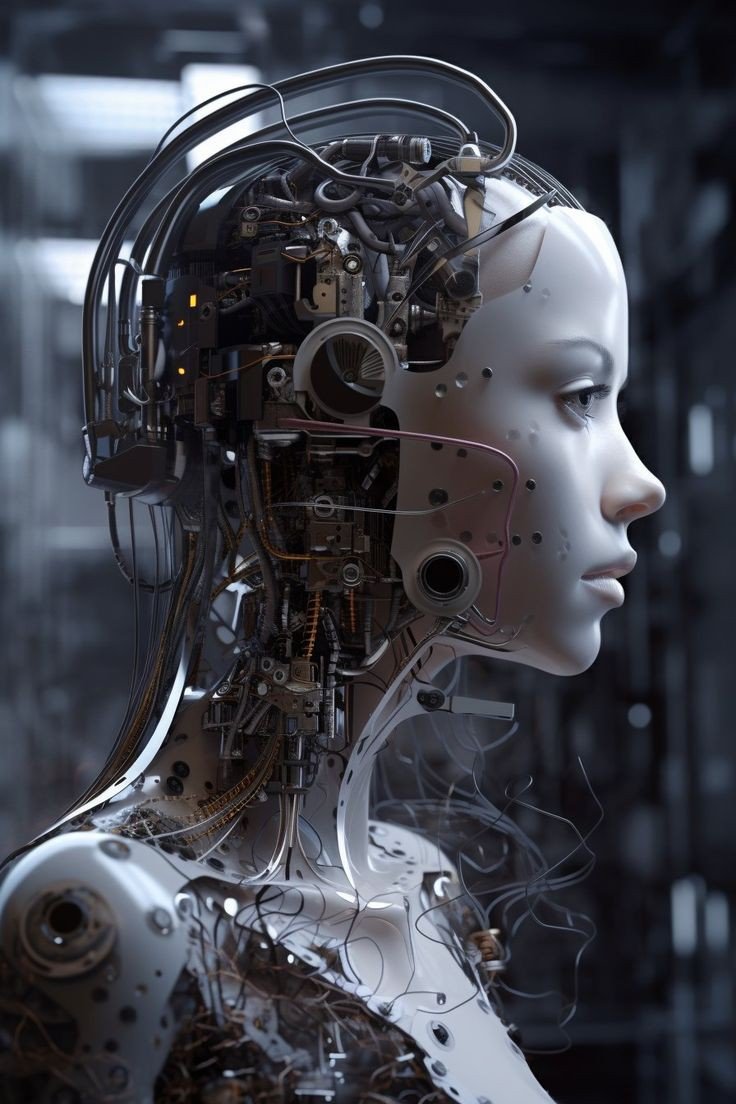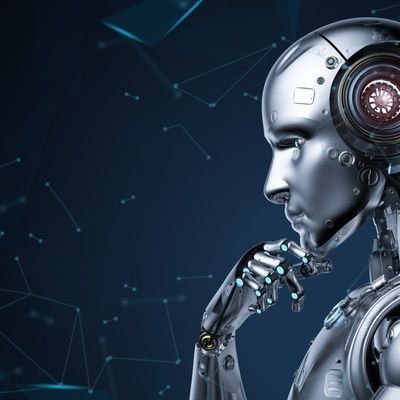
Introduction
The field of robotics has experienced rapid growth and innovation, transforming industries from manufacturing to healthcare, logistics, and even consumer electronics. As we move into 2024, robotics technology continues to evolve, bringing new capabilities and opportunities across various sectors. The integration of artificial intelligence (AI), advanced sensors, and cutting-edge materials is enabling robots to perform tasks that were once considered impossible or too complex.
In this article, we will explore the top robotics trends to watch in 2024, highlighting the advancements that are shaping the future of robotics and their potential impact on industries and society.
1. AI-Powered Robots
Overview:
Artificial intelligence is becoming increasingly integrated with robotics, enabling machines to perform tasks autonomously and make decisions based on real-time data. AI-powered robots are not only capable of performing repetitive tasks but are also learning to adapt to new environments, recognize patterns, and interact with humans more naturally.
Key Developments:
- Machine Learning Integration: Robots equipped with machine learning algorithms are improving their ability to learn from experience, making them more versatile in various applications, such as manufacturing, logistics, and healthcare.
- Natural Language Processing (NLP): The integration of NLP allows robots to understand and respond to human speech, making human-robot interaction more seamless and intuitive.
- Cognitive Robotics: Cognitive robots are designed to mimic human thought processes, enabling them to solve complex problems, make decisions, and even exhibit a form of “common sense.”
Impact:
AI-powered robots are expected to revolutionize industries by automating complex tasks, reducing errors, and increasing efficiency. They will also play a crucial role in enhancing human-robot collaboration, particularly in environments where safety and precision are paramount.
2. Collaborative Robots (Cobots)
Overview:
Collaborative robots, or cobots, are designed to work alongside humans, sharing the same workspace and often assisting with tasks that require precision, strength, or repetitive action. Unlike traditional industrial robots that operate in isolation, cobots are equipped with advanced sensors and safety features that allow them to interact safely with human workers.
Key Developments:
- Enhanced Safety Features: Cobots are being equipped with advanced safety systems, including force sensors, vision systems, and AI-based motion planning, to ensure safe and efficient collaboration with humans.
- Ease of Use: The latest cobots are designed with user-friendly interfaces, making them easier to program and deploy, even for non-technical workers.
- Versatility: Cobots are becoming more versatile, capable of performing a wide range of tasks across different industries, from assembly lines in manufacturing to pick-and-place operations in logistics.
Impact:
The rise of cobots is expected to transform workplaces by enhancing productivity and reducing the physical strain on human workers. As cobots become more accessible and affordable, even small and medium-sized enterprises (SMEs) will be able to leverage their capabilities, leading to widespread adoption across industries.
3. Robotics in Healthcare
Overview:
The healthcare industry is increasingly adopting robotics to improve patient care, enhance surgical precision, and optimize hospital operations. From surgical robots to robotic exoskeletons, these technologies are playing a critical role in advancing medical treatments and improving patient outcomes.
Key Developments:
- Surgical Robots: Surgical robots, such as the da Vinci Surgical System, are becoming more advanced, offering greater precision, flexibility, and control in minimally invasive surgeries.
- Robotic Assistants: Robots are being used to assist healthcare workers in tasks such as patient monitoring, medication dispensing, and even companionship for elderly patients.
- Rehabilitation Robotics: Robotic exoskeletons and prosthetics are being developed to assist patients in regaining mobility and independence after injuries or surgeries.
Impact:
Robotics in healthcare is expected to lead to better patient outcomes, reduced recovery times, and increased efficiency in hospital operations. As these technologies become more widespread, they will also address challenges such as the shortage of healthcare workers and the need for personalized care.
4. Robots in Agriculture
Overview:
Agriculture is undergoing a technological transformation, with robots playing a key role in increasing efficiency, reducing labor costs, and improving crop yields. From autonomous tractors to drone-based crop monitoring, robotics is helping to address the challenges of modern agriculture, such as labor shortages and the need for sustainable practices.
Key Developments:
- Autonomous Farming Equipment: Autonomous tractors, harvesters, and seeders are being developed to perform farming tasks with minimal human intervention, increasing efficiency and reducing the need for manual labor.
- Precision Agriculture: Robots equipped with advanced sensors and AI are enabling precision agriculture, where crops are monitored and managed at the individual plant level, optimizing water usage, pesticide application, and fertilizer distribution.
- Robotic Harvesters: Robotic harvesters are being developed to pick fruits and vegetables with greater speed and accuracy, reducing waste and improving the quality of the produce.
Impact:
Robotics in agriculture is expected to drive the adoption of sustainable farming practices, increase crop yields, and reduce the reliance on manual labor. As these technologies become more affordable, they will also enable small-scale farmers to compete with larger agricultural operations.
5. Swarm Robotics
Overview:
Swarm robotics involves the coordination of multiple robots to perform tasks collectively, inspired by the behavior of social insects like ants and bees. This approach allows robots to work together to achieve complex goals that would be difficult or impossible for a single robot to accomplish.
Key Developments:
- Coordination Algorithms: Advances in coordination algorithms are enabling robots to work together more effectively, distributing tasks among themselves and adapting to changing environments.
- Communication Technologies: Improved communication technologies, such as 5G, are facilitating real-time data exchange between robots, enabling them to coordinate their actions more efficiently.
- Applications in Disaster Response: Swarm robotics is being explored for applications in disaster response, where multiple robots can be deployed to search for survivors, assess damage, and deliver supplies in hazardous environments.
Impact:
Swarm robotics is expected to have a significant impact on industries such as logistics, agriculture, and disaster response, where the ability to deploy large numbers of robots can greatly enhance efficiency and effectiveness. As these systems become more sophisticated, they will also open up new possibilities for autonomous exploration and resource management.
6. Robotics in Retail
Overview:
The retail industry is increasingly adopting robotics to enhance customer service, streamline operations, and improve inventory management. From automated checkout systems to robotic store assistants, these technologies are transforming the shopping experience.
Key Developments:
- Automated Checkout: Robots are being integrated into self-checkout systems, enabling faster and more efficient transactions, reducing wait times for customers.
- Inventory Management: Robots equipped with RFID scanners and AI are being used to monitor inventory levels in real-time, ensuring that shelves are always stocked and reducing the risk of out-of-stock items.
- Customer Service Robots: Robotic assistants are being deployed in stores to help customers find products, answer questions, and even provide personalized recommendations based on shopping behavior.
Impact:
Robotics in retail is expected to improve the customer experience by making shopping more convenient and efficient. Retailers will also benefit from reduced labor costs and better inventory management, leading to increased profitability.
7. Humanoid Robots
Overview:
Humanoid robots, designed to resemble and interact like humans, are advancing rapidly in terms of their capabilities and applications. These robots are being developed for tasks that require human-like interaction, such as customer service, education, and companionship.
Key Developments:
- Improved Mobility and Dexterity: Advances in robotics are enabling humanoid robots to walk, run, and perform complex tasks with greater agility and precision.
- Emotional AI: Humanoid robots are being equipped with emotional AI, allowing them to recognize and respond to human emotions, making interactions more natural and empathetic.
- Social Robots: Humanoid robots are being developed for social interaction, particularly in roles such as customer service, where they can provide assistance, answer questions, and engage with customers in a human-like manner.
Impact:
Humanoid robots are expected to play a significant role in industries such as hospitality, education, and healthcare, where human-like interaction is essential. As these robots become more advanced, they will also raise important ethical questions about the role of robots in society and their impact on human jobs.
8. Robotics in Space Exploration
Overview:
Space exploration is increasingly relying on robotics to explore distant planets, asteroids, and other celestial bodies. Robots are essential for tasks that are too dangerous, complex, or distant for human astronauts.
Key Developments:
- Autonomous Rovers: Autonomous rovers are being developed to explore the surfaces of planets and moons, collecting data and samples for analysis.
- Robotic Arms and Manipulators: Robotic arms are being used on spacecraft and space stations to perform maintenance, repairs, and assembly tasks in space.
- In-Situ Resource Utilization (ISRU): Robots are being developed to extract and utilize resources from celestial bodies, such as water from the moon or minerals from asteroids, to support long-term space missions.
Impact:
Robotics in space exploration is expected to play a crucial role in future missions to the moon, Mars, and beyond. These technologies will enable more ambitious exploration goals, reduce the risks to human astronauts, and pave the way for the eventual colonization of other planets.
Conclusion
As we look ahead to 2024, the field of robotics is set to make significant strides, with advancements in AI, collaborative robots, healthcare, agriculture, swarm robotics, and more. These trends will not only transform industries but also change the way we interact with technology in our daily lives. The continued development and integration of robotics will bring about new opportunities and challenges, shaping the future of our society in profound ways.
9. Soft Robotics
Overview:
Soft robotics is an emerging field that focuses on creating robots made of flexible, soft materials, mimicking the movements and adaptability of biological organisms. These robots are designed to handle delicate tasks and navigate challenging environments that traditional rigid robots cannot.
Key Developments:
- Material Innovation: Advances in materials science are leading to the development of new, flexible materials that can be used in soft robotics. These materials allow robots to bend, stretch, and adapt to their surroundings.
- Biomedical Applications: Soft robots are being explored for use in medical applications, such as minimally invasive surgery, where their flexibility allows them to navigate through the body without damaging tissues.
- Agriculture and Food Handling: Soft robots are ideal for handling delicate produce and other food items, reducing the risk of bruising or damage during harvesting and packaging.
Impact:
Soft robotics is expected to revolutionize industries that require gentle handling of products or operations in unpredictable environments. These robots will be particularly useful in healthcare, agriculture, and manufacturing, where precision and adaptability are critical.
10. Telepresence and Remote Robotics
Overview:
Telepresence and remote robotics involve controlling robots from a distance, allowing humans to interact with and manipulate environments that are otherwise inaccessible. This technology is particularly useful in hazardous environments, such as deep-sea exploration, nuclear facilities, and space missions.
Key Developments:
- Haptic Feedback: Telepresence robots are being equipped with haptic feedback systems, allowing operators to “feel” what the robot is touching, providing a more immersive and precise control experience.
- VR Integration: Virtual reality (VR) is being integrated with telepresence robots, enabling operators to control robots in remote locations while experiencing the environment in 3D, as if they were physically present.
- Remote Surgery: Telepresence robots are being used in remote surgery, where surgeons can perform operations from miles away, providing access to medical care in underserved areas.
Impact:
Telepresence and remote robotics are expected to have a significant impact on industries such as healthcare, disaster response, and exploration. These technologies will allow humans to safely interact with dangerous environments and provide services in remote locations, improving safety and accessibility.
11. Education and Robotics
Overview:
The integration of robotics into education is transforming the way students learn and interact with technology. Educational robots are being used to teach coding, engineering, and even social skills, providing hands-on experience with cutting-edge technology.
Key Developments:
- Robots in Classrooms: Educational robots are becoming more common in classrooms, helping students learn subjects like mathematics, science, and programming in an interactive and engaging way.
- Coding and STEM Education: Robotics kits are being developed specifically for teaching coding and STEM (Science, Technology, Engineering, and Mathematics) subjects, encouraging students to explore these fields from a young age.
- Social Robots for Special Education: Social robots are being used in special education to help children with autism and other developmental disorders improve their social skills and communication.
Impact:
Robotics in education is expected to inspire the next generation of engineers, scientists, and technologists. By providing students with hands-on experience, educational robots will play a crucial role in developing the skills needed for the future workforce.
12. Environmental Robotics
Overview:
Environmental robotics focuses on using robots to monitor, protect, and restore natural environments. These robots are being developed to address some of the most pressing environmental challenges, such as pollution, climate change, and biodiversity loss.
Key Developments:
- Marine Robotics: Robots are being deployed in oceans and rivers to monitor water quality, track marine life, and clean up pollutants such as oil spills and plastic waste.
- Reforestation Drones: Drones equipped with robotic planting systems are being used to reforest areas by dispersing seeds in a precise and efficient manner, aiding in ecosystem restoration.
- Wildlife Monitoring: Robots equipped with cameras and sensors are being used to monitor wildlife populations, track endangered species, and study ecosystems without disturbing the natural habitat.
Impact:
Environmental robotics is expected to play a key role in conservation efforts and environmental protection. These technologies will provide valuable data for researchers, help restore damaged ecosystems, and contribute to the fight against climate change.
Conclusion
The robotics trends of 2024 are set to push the boundaries of what robots can do, bringing new capabilities and applications across a wide range of industries. From AI-powered robots and cobots to advancements in healthcare, agriculture, and space exploration, robotics is poised to transform our world in ways we are only beginning to understand.
As these technologies continue to develop, they will not only enhance productivity and efficiency but also raise important ethical and societal questions about the role of robots in our lives. The future of robotics is bright, and as we move forward, it will be essential to ensure that these innovations are harnessed for the greater good, improving quality of life and addressing some of the most significant challenges facing humanity.









